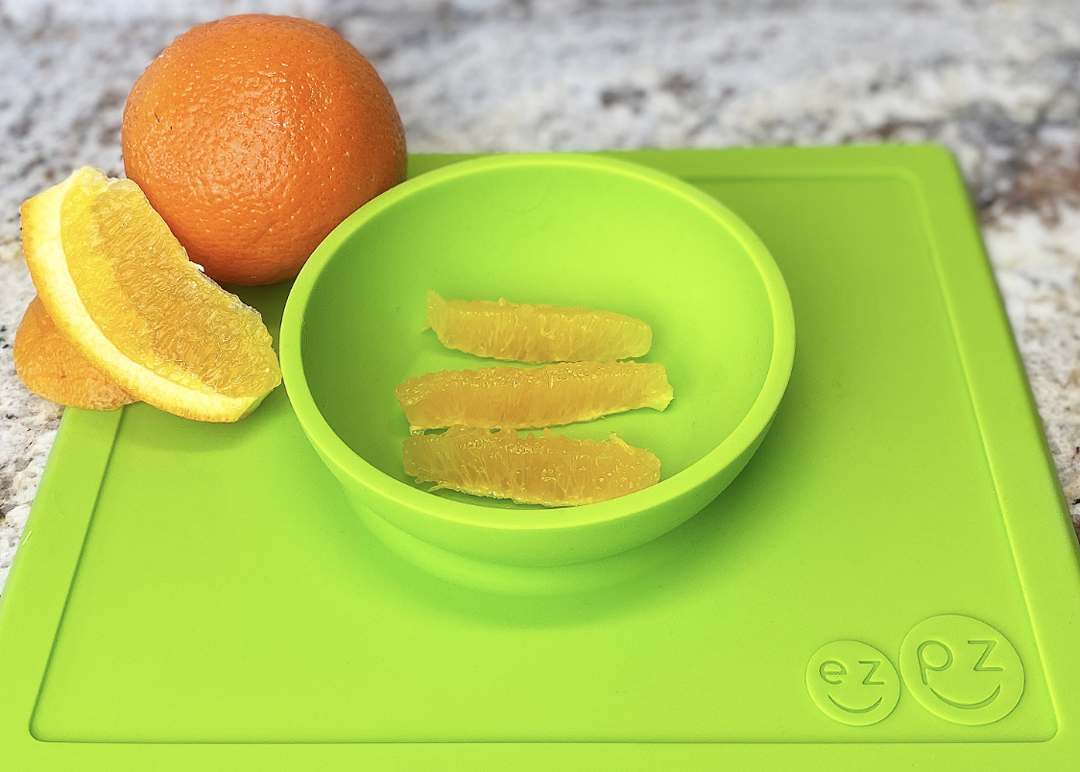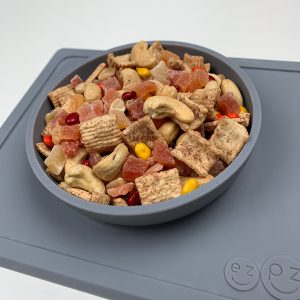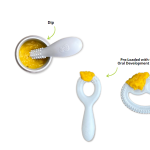How to Introduce Oranges

Have you ever gotten excited about offering an orange to your child, only for them to refuse to eat it? It might be due to the type of orange you used. Some oranges are too tart, others too sweet, and some are high choking risks for baby. Here are some expert tips on introducing oranges to your baby or toddler.
Navel Orange
For Babies
The taste of a navel orange is very sweet. Don’t worry. Your baby won’t get stuck on sweet flavors if you offer fruits (like oranges) before you offer vegetables. Just switch it up at every meal – fruit for breakfast, veggie for lunch, fruit (or veggie) for dinner. And this is easy to do with a Navel Orange since it’s the most accessible variety for parents to find. It’s widely available at grocery stores, farmer’s markets, and roadside citrus stands.
For Toddlers
The name and shape of the navel orange is so adorable! When I teach toddlers about this type of orange in feeding therapy, I like to show off the “belly button” of the orange – it’s the cutest little navel! Kids love that it has a belly button, and they usually start showing off their belly button too, which of course, leads to tickling, laughter, and then eating!
Valencia Orange
For Babies
This orange variety has a hint of bitterness as well as sweetness. I like to offer Valencia Oranges to babies because it has that bit of bitter undertone that is more complex, like a vegetable taste. This can really expand and push your baby’s palate!
For Toddlers
In my clinical experience, this orange is the most difficult for kiddos if they have a history of pocketing, overstuffing, or motor/sensory challenges. These children might have difficulties swallowing multiple textures, increasing their risk of choking because of the amount of pulp and juiciness that comes with this variety.
Blood Orange
For Babies
It’s crucial to offer baby various colors or tints of food to decrease picky eating. For example, if you have been offering your baby oranges for a while, chances are they were dark yellow or “orange” color. So, introducing a Blood Orange will provide babies with a new reddish, pink color on their plate!
For Toddlers
When I introduce this orange variety to my boys in feeding therapy, they love that the word “blood” is in the name. They usually think it’s the coolest fruit to eat and enjoy showing off its bloody juices! But my female clients are a bit more squeamish about the name, and some have even refused to try it. So, I’ve had more success calling it the “red” orange with them. Then, after she learns to eat and enjoy it, I reintroduce the orange with the appropriate name. I think this is important because I strongly believe that accurate food education will equip our children with the lifelong skill of being adventurous eaters!
Mandarins, Tangerines, Clementines (Cuties or Halos)
For Babies
Although these types of oranges are easy to peel and prepare, these varieties are a high choking risk if given to your baby. Given their small size, they are also really difficult for me to cut the membranes off and take out all the seeds. I’m usually left with a mushy mess by the time I’m finished. Instead, you can buy them canned or jarred to make them safer for baby. But remember, slippery foods can also be a choking risk, so be sure to stay with your baby at all times when they are eating.
For Toddlers
Although you may be eager to give your young toddler these for lunches and snacks, please know that they still can be a choking risk when offered in their whole form with the membrane on. As a result, most feeding therapists like myself wait to offer these varieties until a toddler is 36+ months.
I hope these tips will help you pick the right orange to introduce to your baby or toddler! What are some ways you add oranges to your child’s mealtime? What is your toddler’s favorite type of orange, and how do you serve it? #MsDawnSLP





